Article by Elizabeth Zhang
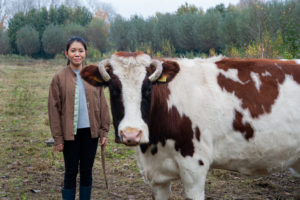
I recently started Michael Pollan’s “Omnivore’s Dilemma” and in the early chapters, he discusses purchasing a steer (named simply No. 534), to follow this one animal from birth to slaughter, in order to better understand the modern food production chain in the US. To borrow a quote from his writing:
What grocery-store item is more silent about its origins than a shrink-wrapped steak? Yet I recently began to feel that ignorance was no longer tenable. If I was going to continue to eat red meat, then I owed it to myself, as well as to the animals, to take more responsibility for the invisible but crucial transaction between ourselves and the animals we eat.
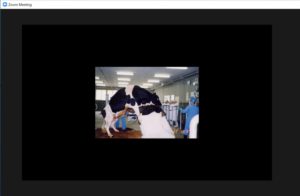
I have wondered, day to day, how many of us have stopped to think about where our food comes from? And I don’t simply mean the country of origin nor even the specific farm or factory. How many of us have stopped to consider the production and steps that are behind each item of food that crosses our plate. So when I saw the latest Slow Food Hong Kong event being advertised, “Cow Story: Online Sharing with Adelaide Lala Tam” and subsequently read about her project, “How to Consume Romie 18”, I thought what a timely coincidence and was eager to hear about her experience with the cattle industry.
Adelaide Lala Tam is a Rotterdam based food designer who was born and raised in Hong Kong. Food design is a relatively new field – it is design studies and research that generates new products related to food. And as I understood from Adelaide’s interpretation, food design intends to use food as a medium to react to social issues with sustainability as an overriding aim. Adelaide has given various talks and won a number of accolades for her food design projects but the Slow Food talk was in fact her first time in front of a Hong Kong based audience.
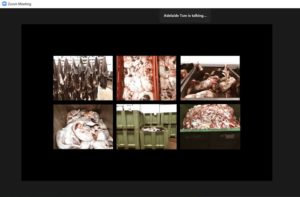
For Adelaide, the beginning of her story was born from a simple food craving. A craving for cow offal soup, a local Hong Kong specialty that was hard to come by in Eindhoven where she was living and studying at the time. This craving for a taste of home led Adelaide on a journey, first a physical journey to a local butcher in search of offals, then eventually an educational journey that spawned her interest in the cattle industry. She began by researching and learning about the slaughtering process.
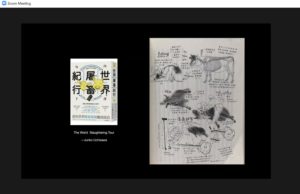
She highlighted an interesting book, Junko Uchizawa’s “The World Slaughtering Tour” that furthered her curiosity in how meat was slaughtered around the world. She also shared the powerful experience of her first visit to a mid-size slaughterhouse in Eindhoven where she saw a cow being led into the cage for slaughter. That moment where she described seeing the fear in the cow’s eyes has imprinted onto her memory and impacted the direction of her future projects.
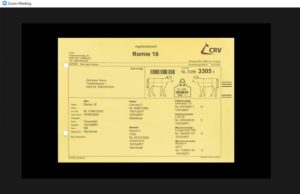
The entire process from cow on a farm to meat sold at a butcher seemed so far removed from the consumer that Adelaide pondered if knowing more could influence individual food choices. And how could she, as a food designer, connect the story of the cow from birth to slaughter to the end consumer. Adelaide spoke about a number of projects she worked on at university towards her food design degree that were born out of her interest in the cattle industry but the main focus of the talk was her post graduation project, “How to Consume Romie 18.” Romie 18 was a dairy cow raised on a biodynamic farm that Adelaide volunteered at in Eindhoven. Adelaide’s intention was to follow from farm through to slaughter and to use all the parts -milk, meat, hide, fat, and bones- to tell a tale of one cow’s life. Adelaide explained she chose Romie-18 for her calm nature and unique horns that grew in a circle back into her own skull.
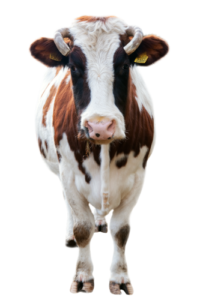
Adelaide went on to follow Romie 18 at the farm for two years until she was slaughtered on 18 November, 2019. The original plan had been to create a feast for people to gather and eat the meat and cheese produced from Romie 18, whilst Adelaide spoke on her life. However due to the onset of the pandemic, the meat and cheese was packaged and sold at a farmhouse shop instead. The packaging displayed a prominent sticker of Romie 18’s face and included a pamphlet documenting her life as well as all the items used for her day to day care at the farm.
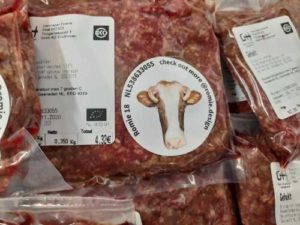
Adelaide has also held onto the cow hide, fat and bones in order to create objects that she hopes will celebrate Romie 18’s life. The hide she had tanned and is currently waiting to be made into leather products. She is collaborating with a soap maker to create soap from Romie 18’s fat. And finally the bones were burnt into ash that she intends to make into bone china. Call me ignorant, but I didn’t even realize there is actual bone in bone china (40% animal bone ash according to Adelaide).
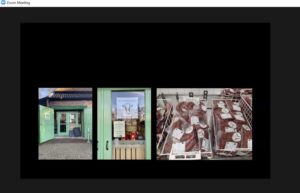
Overall, Adelaide presented an incredibly eye opening and thought provoking talk. It wasn’t the sort of content that some might fear would put you off eating meat after. As Adelaide herself noted, the point isn’t to make people vegetarian, the point is to help create a connection between animal and consumer, to peel back the layers of industrial food production. I feel we as consumers all have much to learn in order to help us make the best possible food choices. And perhaps putting a face to the package of meat we buy at a supermarket or butcher is the right way to get us thinking about our responsibilities to ourselves, to the animals we eat and to the world overall.